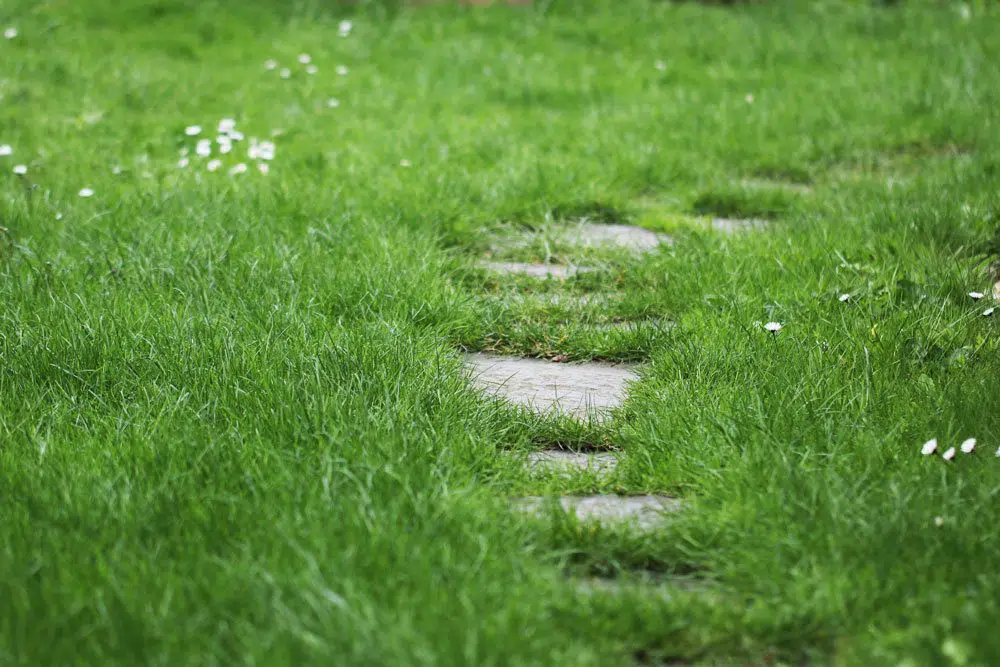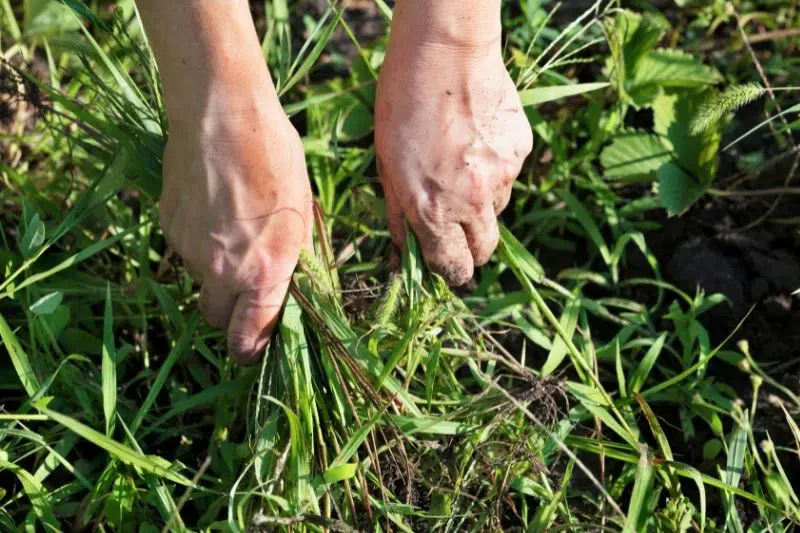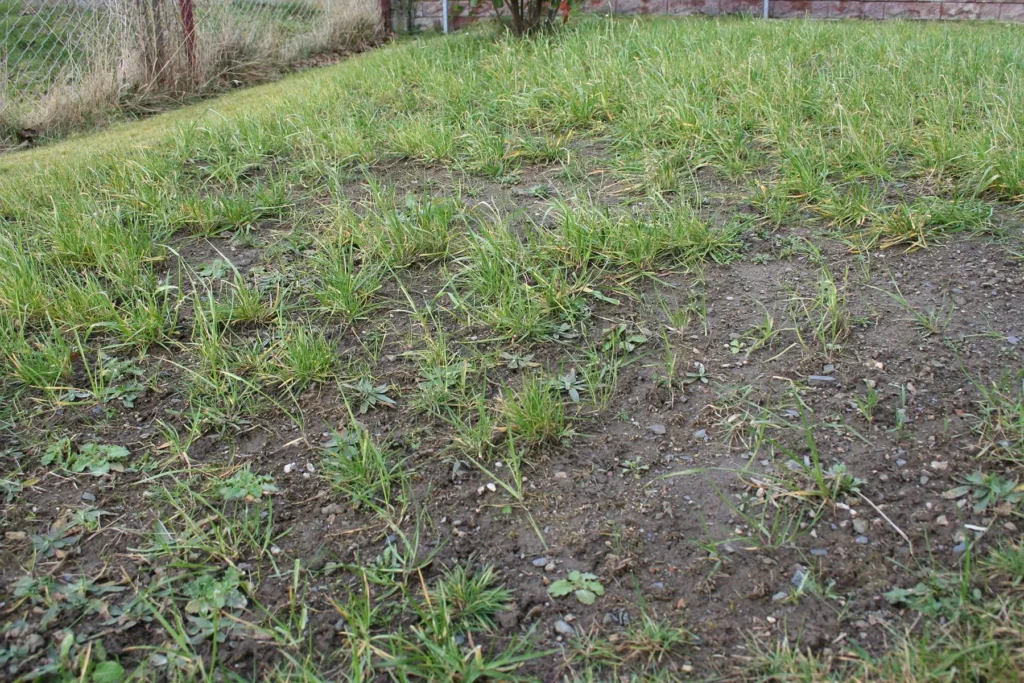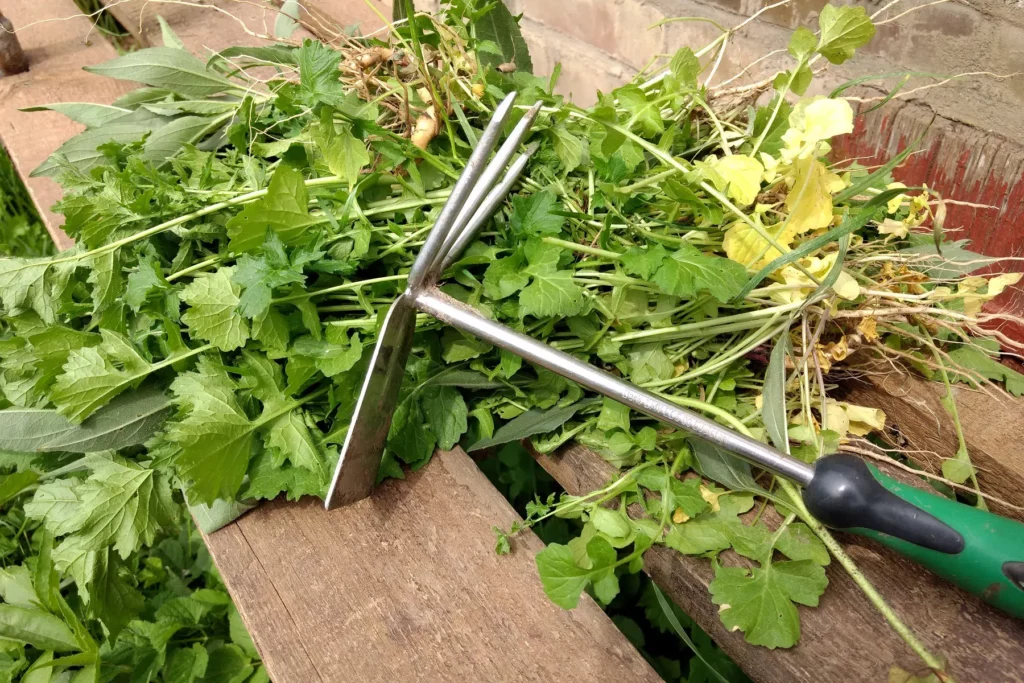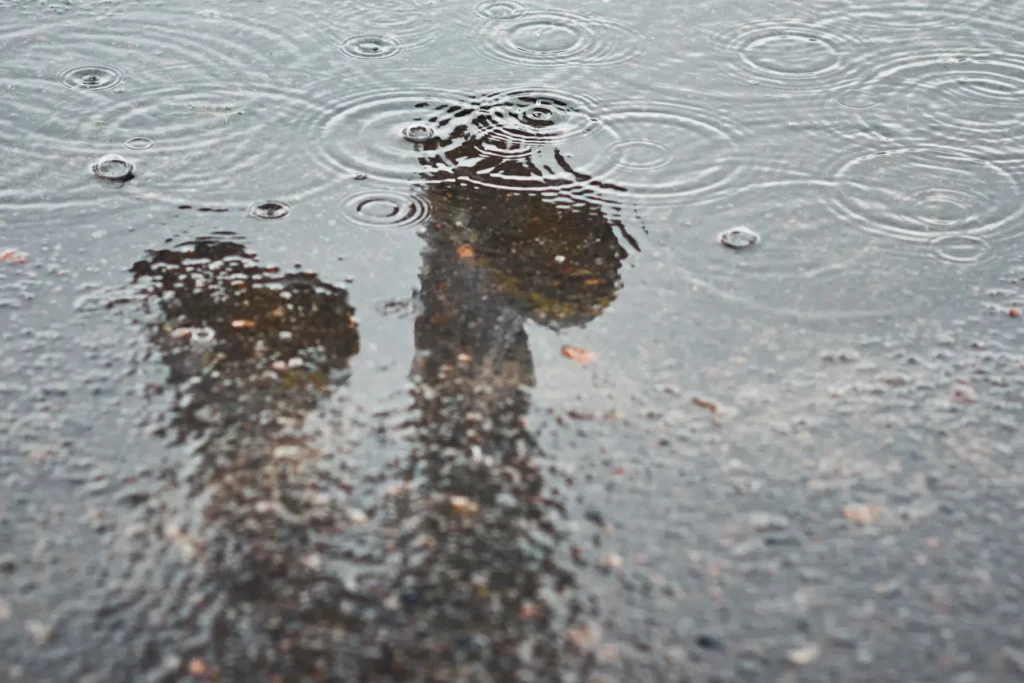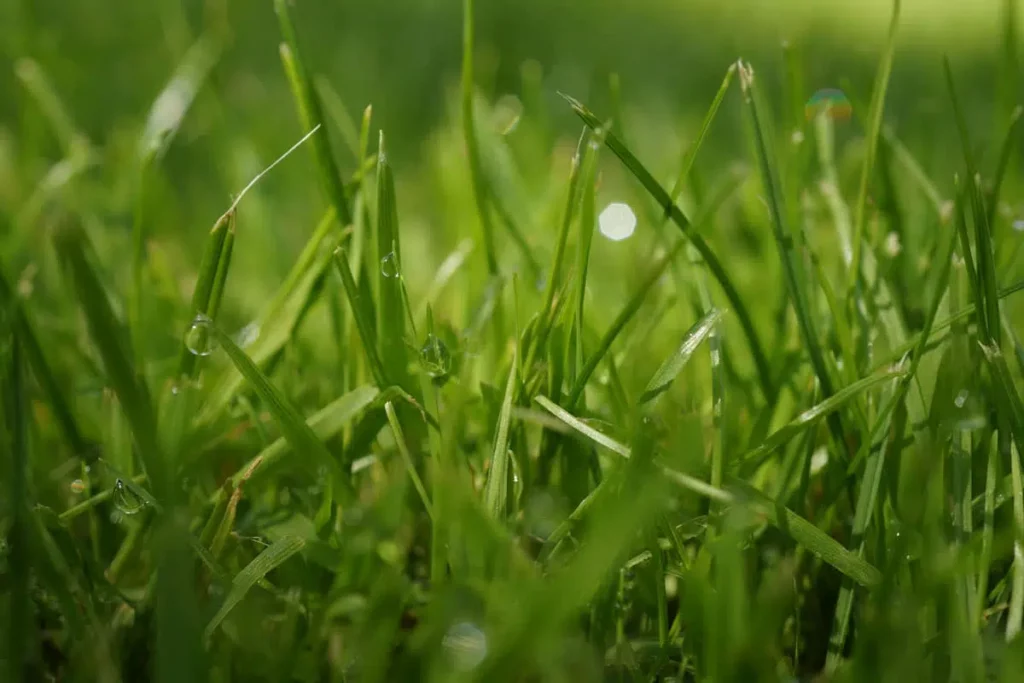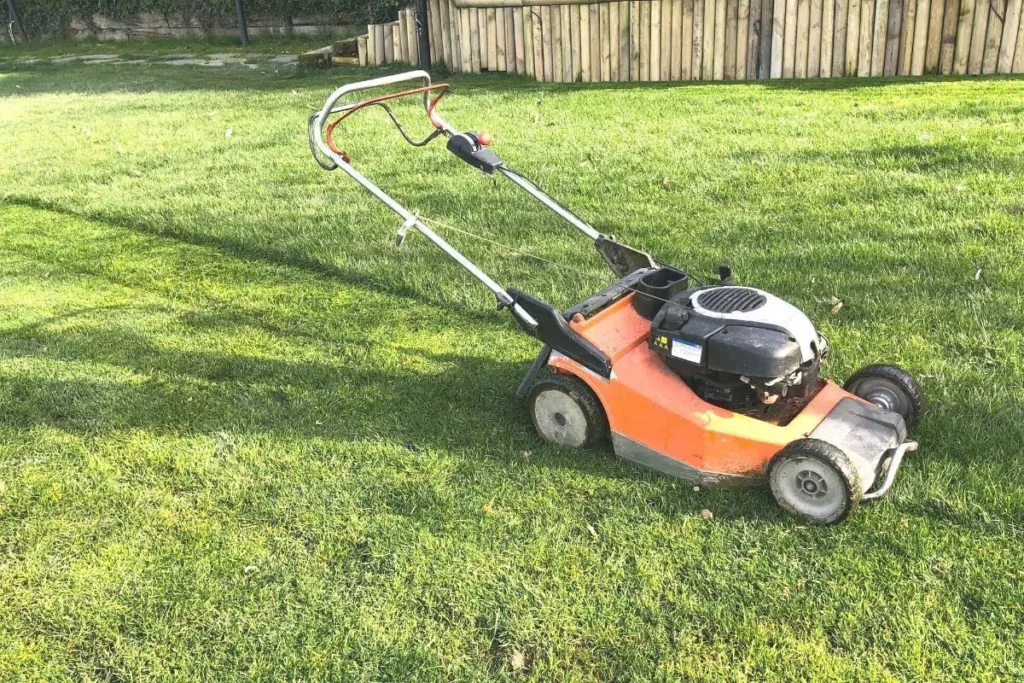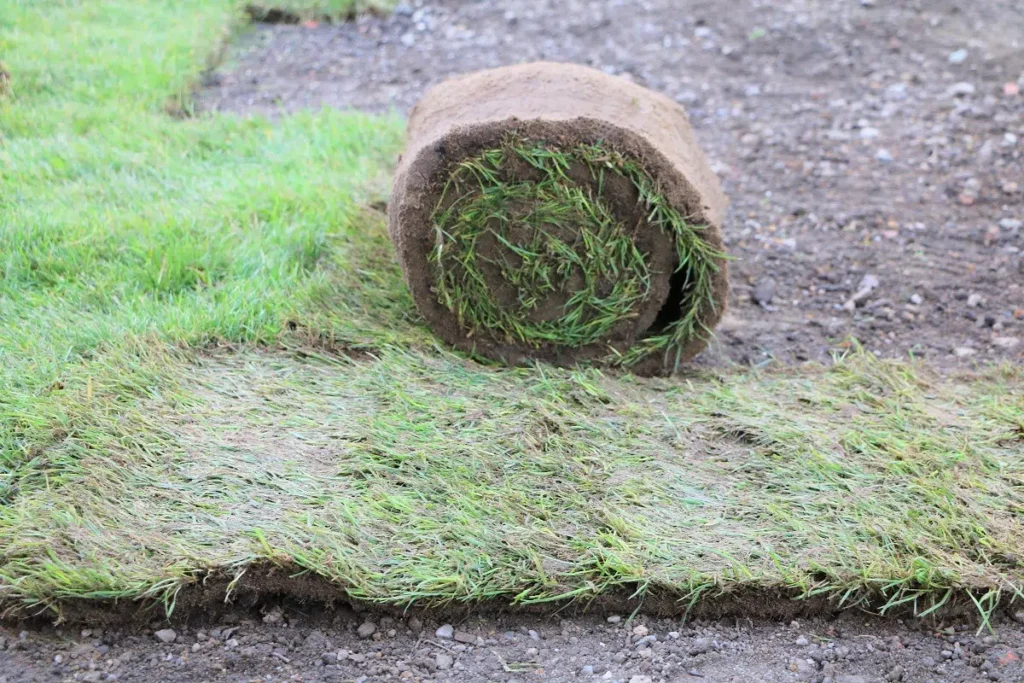A beautiful, soft, green and well growing lawn. A dream of many garden owners. But if the soil is too hard, the lawn will not grow properly either. Here’s what you can do about it.
- A soil rich in clay and loam is often too firm by nature for the needs of a lawn
- You can recognize a soil layer that is too firm by cracks during drought and puddles after rain
- Your grass does not germinate properly or shows no growth
- Deep tilling of the soil is then absolutely necessary
- Afterwards, you need to maintain your lawn well and aerate it regularly to keep it in good condition
Contents
The ideal soil
Lawn grasses such as ryegrass, bluegrass or fescue need above all the right soil for good and healthy growth. This is the basis for a lively, healthy and fresh lawn. Grasses need a loose, fine and well-aerated substrate. Only then can the roots of the grasses develop well and the grass remains healthy. If the soil layer is too hard, exactly this does not succeed. The roots can not spread sufficiently and do not provide the grasses with enough nutrients. This results in poorly growing lawn plants or even death of the lawn grasses. The ideal conditions are therefore:
- a loose, fine-crumb substrate
- sufficient aeration
- a pH value between 5.5 and 7
Recognizing the hardness
If your soil is too hard, you will probably recognize it very quickly. The grass will not germinate or continue to grow. When it rains, puddles of water form on the lawn because rainwater can’t percolate. When it is dry, cracks form on the surface of the soil and it is very difficult to pick up soil by hand. If you notice these signs, your substrate is definitely too firm and compacted and you should do something about it so that your grass can grow nicely again.
Reasons for hardness
The main reason is usually a very high clay and loam content in the soil. This is because clay and loam compact very quickly and cause the substrate to become hard. Another reason is heavy use. If there is a lot of walking or playing on the lawn, the weight will compact it much faster than an area that is hardly walked on. A heavily used green area therefore needs much more maintenance.
Tip: You can determine the clay and loam content of your soil by picking up a handful of soil and trying to shape it into a sausage. If this succeeds easily, the soil is very loamy. If the sausage breaks down easily, it is more sandy.
Action
If your ground is too firm, however, you can do something about it and loosen the layer of soil. In the case of a very hard subsoil still completely without a humus layer, you will not be able to avoid deep measures. Once the humus layer is in place, you must continue to maintain clayey soils regularly to maintain the loosened condition.
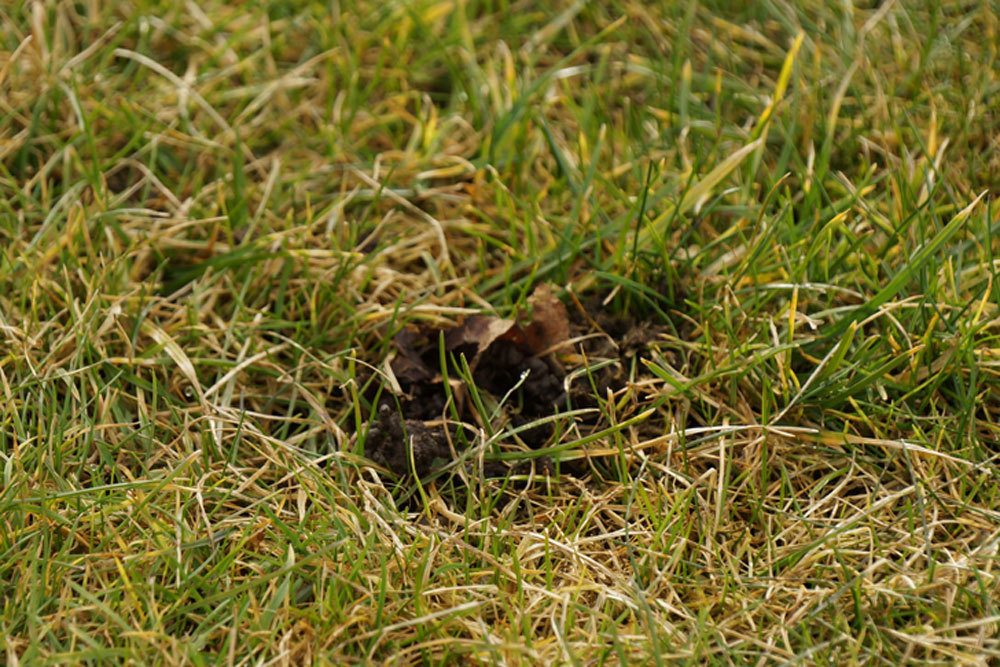
Radical soil renewal
If your subsoil is too clayey and firm, you need to fundamentally prepare it once for (re)planting. The following steps are necessary for this:
- Dig the soil surface completely down to the depth of a spade (autumn).
- In the process, work coarse quartz sand and compost into the soil.
- Water the soil regularly when there is no rainfall
- Spreading high-quality lawn seed (spring)
- Water the lawn frequently, but not too intensively (no waterlogging!)
- Fertilizing with lawn fertilizer in early summer
Note: If you fundamentally renew the lawn, you can immediately pay attention to the pH value. If it is too low, you can lime the soil before sowing. If it is too high, you can work bark humus into the soil layer.
Regular care
To ensure that the lawn, once loosely planted, stays that way, it requires regular care. Digging over the lawn is no longer necessary or advisable. However, the lawn must always be well aerated and occasionally loosened up. A digging fork or hoe can be used to loosen the top layer of soil and allow air to better reach the roots. You can also scarify the lawn. This will scarify the turf and increase the aeration of the soil layer. With these steps you prevent the soil from re-hardening.
Note: A wet lawn surface will compact faster if you walk on it. Therefore, as long as the surface is still wet, you should avoid walking on it if possible.
Frequently asked questions
There are many different lawn mixtures available in stores for sowing. Some dealers now also offer special mixtures for hard and clay soils. These can then best deal with the given conditions. For example, deep-rooted lawn plants are particularly suitable. However, you still can not avoid regular care and ventilation.
Mowing the lawn itself does not differ depending on what the soil conditions are. However, when reseeding lawn, you should mow no earlier than when the height is five to six centimeters.
This is possible. For example, you can use clover, yellow mustard, marigolds, marigolds, lupines or nasturtiums to naturally loosen the soil. Sow these plants in early summer. In winter, they die and decompose. But only in the following September, you should then sow the new lawn. Weeds that grow in the summer should be removed.

